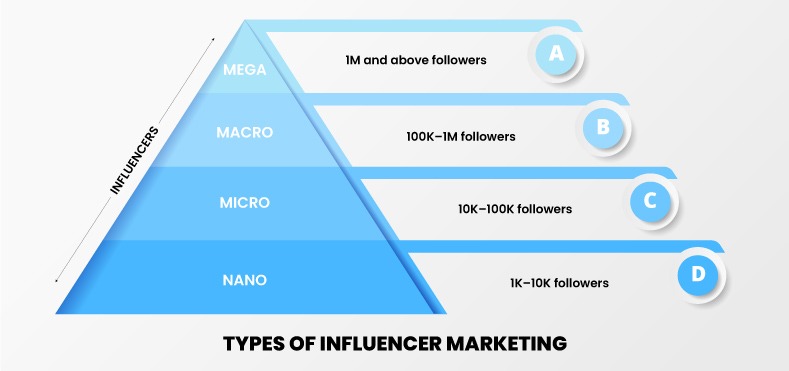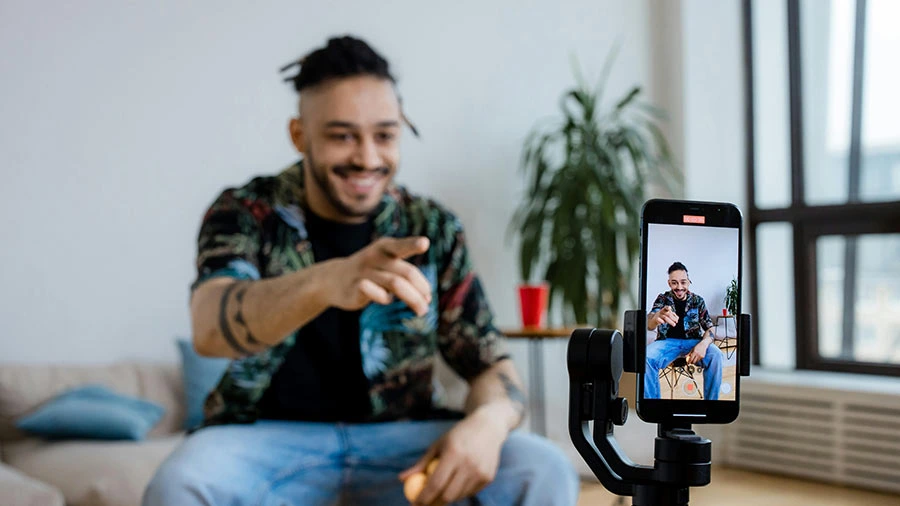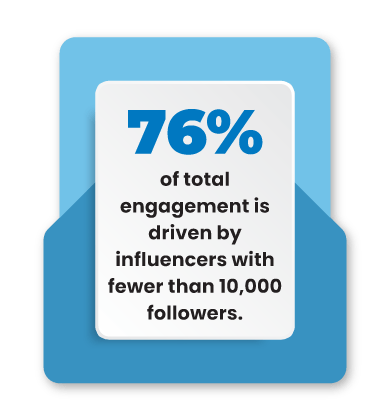Influencer marketing has evolved into an indispensable component of modern social strategies, with its impact on consumer behavior undeniable. The 2025 Influencer Marketing Report reveals a striking statistic: 86% of consumers make at least one annual purchase inspired by an influencer. Beyond the celebrity endorsements of the past, today’s vibrant creator ecosystem spans numerous platforms, cultivating authentic connections within niche communities. For brands aiming to cut through the digital clutter, a strategic approach to influencer marketing is crucial. This guide offers actionable insights for building effective strategies, identifying pitfalls, and finding the right influencers to amplify your brand’s message.
What is B2B Influencer Marketing?
Influencer marketing is a strategy where businesses partner with individuals called influencers, who have built a strong, engaged following on social media platforms or within specific industry niches. These influencers promote a brand’s products, influencer services, or values through authentic, relatable content tailored to their audience.
Unlike traditional advertising, influencer collaboration leverages trust and personal connection. Followers often view influencers as credible sources, so their recommendations carry weight and serve as powerful social proof. Social influencer partnerships can be paid, product-based, or affiliate-driven, depending on the campaign goals.
Influencers operate across platforms like Instagram, TikTok, YouTube, LinkedIn, and blogs, with Instagram influencer marketing remaining the leading platform for influencer campaigns. Many brands now use an influencer marketing platform to discover, manage, and measure partnerships more efficiently. Whether the aim is driving awareness, boosting credibility, or increasing conversions, influencer engagement blends content creation with word-of-mouth promotion in a way that feels more organic than traditional ads. This strategy has grown into a vital tool for brands looking to stand out in a crowded digital space.
 Key elements of B2B Influencer Marketing:
Key elements of B2B Influencer Marketing:
Launching a social influencer marketing strategy takes thoughtful planning and a solid grasp of how these partnerships operate. Whether you’re managing it in-house, building an influencer program, or partnering with influencer marketing services, here’s a breakdown of the key elements you should understand before diving in.
1. Increase Brand Awareness
Influencers introduce your brand to new and relevant audiences through their content. This is especially valuable for new or growing businesses trying to break into saturated markets. When followers see a product endorsed by someone they trust, it instantly boosts visibility and piques interest, helping build brand recognition quickly.
2. Targeted Reach
Working with influencers in your specific niche ensures your message reaches an audience that’s already interested in what you offer. By aligning your brand with the influencers lifestyle, you can create content that feels authentic and relatable to their followers. A well-structured influencer program helps you consistently tap into these niche communities. It’s a smarter way to connect with people who matter most to your business goals.
3. Improved Credibility and Trust
Influencers build strong, loyal communities based on trust and authenticity. When they promote a brand or product, it acts as social proof for their audience. This endorsement boosts your credibility and helps form trust faster than traditional marketing methods, particularly in competitive spaces like B2B tech.
4. Cost-Effective Marketing
Compared to traditional display advertising, influencer collabs offer excellent value for money. Micro- and nano-influencers, in particular, provide high engagement rates at a lower cost. Whether you’re working with a large budget or a small one, or relying on professional influencer marketing services to scale your efforts, you can achieve strong results without overspending on media placements or production.
5. Strong Return on Investment (ROI)
Social influencer marketing delivers measurable results. Studies show that brands can earn over $5 for every $1 spent. This is especially true when partnering with B2B marketing influencers, who can drive high-value engagement and credibility within professional networks. In addition to sales, you also gain engagement, brand awareness, and user-generated content, all of which contribute to a stronger marketing ROI over time.
Types of Social Influencer Marketing for B2B:
Understanding each influencer type’s reach, cost, and engagement potential is essential for making the right choice for your brand. Let’s explore the different categories in more detail:
1. Mega Influencers
Mega influencers have over 1 million followers and are often celebrities or well-known public figures. They provide unmatched reach and visibility, making them ideal for large-scale brand awareness campaigns. However, their broad audience can mean lower engagement rates, and partnerships with them are usually expensive—best suited for big brands with the budget to match.
2. Macro Influencers
With 100,000 to 1 million followers, macro influencers have built authority in specific niches like fitness, fashion, or tech. They strike a balance between reach and relevance, offering targeted exposure with a more engaged audience than mega influencers. Many followers are drawn to their content because it represents a desirable yet attainable influencers lifestyle, making their endorsements feel both aspirational and relatable.
3. Micro-Influencers
Micro influencers typically have between 10,000 and 100,000 followers. They specialize in niche content and boast highly engaged audiences. Their content often feels more authentic and relatable, making them trusted voices within their communities. Micro influencers are affordable, flexible, and ideal for brands looking to build trust, encourage engagement, and drive conversions without overspending.
4. Nano Influencers
Nano influencers have 1,000 to 10,000 followers and thrive in tight-knit communities. Their content feels genuine, and their engagement rates are often the highest among influencer types. They’re perfect for small businesses, local campaigns, or brands looking for cost-effective partnerships. Nano influencers often accept free products or discounts in exchange for honest reviews and promotional posts.

Crafting Your B2B Influencer Marketing Strategy:
You are ready to dive into the world of influencer marketing for B2B. Here’s a six-step guide to creating an effective strategy, keeping each step concise and easy to understand.
1. Lay the Groundwork
Start by setting clear, measurable goals (what do you want to achieve?). Whether it’s boosting brand awareness or driving sales, specific goals help track success. Next, identify your target audience to understand who you need to reach. This guides your influencer selection. Finally, develop a budget and timeline to determine what resources you have, and establish Key Performance Indicators (KPIs) to measure progress towards your goals.
2. Decide on Your Channels
Different social media influencer marketing platforms cater to different demographics and content styles. Instagram is great for visuals, influencers lifestyle content, and appealing to Gen Z and Millennials, especially for Instagram influencer marketing. YouTube is ideal for in-depth reviews and tutorials, while TikTok influencer marketing excels with short, engaging videos for younger audiences. For B2B brands, LinkedIn offers serious credibility. Choose the best influencer marketing platform that aligns with your audience and the type of content you want to create.
3. Choose the Right Influencers
Begin by looking for influencers within your niche who align with your brand values. Consider the “3 Rs”: Resonance (their engagement level), Relevance (how well their content matches your brand), and Reach (their follower count). Don’t just focus on large followings; sometimes nano- or micro-influencers offer higher engagement. Carefully review their content, audience comments, and engagement rates to ensure authenticity and a good fit for your product.
4. Contact Your Chosen Influencers
For smaller influencers, a direct message on social media influencer marketing often works. Larger influencers might have agents or dedicated business emails, so check their bios. When contacting them, personalize your message and clearly state your brand’s name, campaign goals, and how you envision the collaboration. Remember, partnerships are a two-way street, so highlight the value you offer to the influencer, whether it’s payment or free products.
5. Decide on a Content Strategy
Allowing influencers creative freedom is crucial for authentic content. They know their audience best, so trust their judgment. While you can provide brand guidelines and specify the product or service to be featured, avoid overly strict scripts. Discuss various content types that resonate with their followers, such as unboxing videos, tutorials, reviews, or contests. The goal is to let their unique style shine through while still conveying your brand’s message effectively.
6. Measure and Optimize Your Campaign
After launching, diligently track your campaign’s performance against your set KPIs. Monitor organic traffic to your website, engagement rates on the influencer’s posts (likes, comments, shares), and overall brand sentiment through social listening. Crucially, track conversions to see if the campaign is driving sales. Also, keep an eye on profile visits to your social media accounts. Use these insights to refine your strategy, learn what works best, and optimize future campaigns for even greater success.
Tracking Your Influencer Marketing in B2B:
To understand the true impact of your influencer campaigns, it’s important to track the right metrics. Here are the measurement metrics:
1. Social Engagement Metrics
Engagement metrics such as new company page followers, content shares, and comment quality on influencer-led posts can be useful. An increase in relevant audience interactions, such as decision-makers liking or commenting, signals that your message is reaching the right people. Monitor brand mentions and shared thought leadership to assess brand visibility. If influencers are sparking conversations around your expertise, you’re driving meaningful awareness within your niche.
2. Lead Quality & Funnel Impact
Track the quality of leads generated from influencer campaigns using CRM tools. Are the MQLs and SQLs influenced by content partnerships progressing through the pipeline? Identify which influencers are driving interest from relevant industries, roles, and company sizes. Monitor gated content downloads, demo requests, or webinar signups tied to influencer activity to gauge how campaigns support pipeline development.
3. Website Performance
Use UTM links and analytics tools to measure website traffic coming from influencer posts, newsletters, or podcasts. Pay attention to bounce rates, average session duration, and time on key landing pages. If influencers are directing high-intent traffic, visitors will spend time exploring. Also, track backlinks and mentions in industry blogs or niche publications influenced by your partnerships; these earned media moments can boost both brand credibility and SEO.
4. Influencer-Generated Content (IGC) Value
Create whitepapers, LinkedIn articles, videos, or co-branded webinars. Measure ROI by assessing how this content performs across channels, how much engagement it receives, and the costs saved on internal production. Effective IGC can drive thought leadership, nurture leads, and support account-based marketing efforts. Repurposing this content in email campaigns, sales decks, or paid ads increases reach and return without increasing spending.
 Common Challenges and How to Overcome Them:
Common Challenges and How to Overcome Them:
B2B influencer marketing, like any other marketing strategy, has its challenges. Here are some common challenges you may encounter and possible solutions to overcome them:
1. Brand Reputation Risks
Problem: Collaborating with an influencer who later becomes involved in a scandal or controversy can damage your brand’s image and trust with its audience.
Solution: Thoroughly vet potential influencers by researching their past behavior, content, and values to ensure they align with your brand’s integrity.
2. Lack of Authenticity
Problem: Audiences can easily spot inauthentic partnerships where an influencer promotes a product that doesn’t fit their brand, eroding consumer trust.
Solution: Focus on working with influencers who genuinely use and love your product, allowing for a more natural and believable endorsement that resonates with their followers.
3. Measurement and ROI Challenges
Problem: Quantifying the direct return on investment from influencer campaigns can be difficult without clear metrics, making it hard to prove success.
Solution: Implement specific tracking methods like unique discount codes, custom landing pages, or affiliate links to accurately measure conversions and campaign performance.
4. Limited Control Over Messaging
Problem: Handing over creative control to an influencer can lead to messaging that deviates from your brand’s core guidelines, potentially confusing the audience.
Solution: Provide a clear but flexible creative brief that outlines key talking points and brand values while still allowing the influencer to use their unique voice.
5. Inconsistencies Across Campaigns
Problem: Working with multiple influencers simultaneously can result in a fragmented and inconsistent brand message if not properly managed, diluting your brand identity.
Solution: Create a comprehensive brand guidelines document for all influencers, ensuring a cohesive tone and visual style across all collaborations and campaigns.
Success Stories: B2B Influencer Marketing:
Let’s dive into some real-world examples of B2B influencer collaboration to see how different businesses are successfully leveraging this strategy. Each example provides a valuable lesson you can apply to your own business.
Shopify
Gartner’s study found that YouTube influences 65% of recent B2B purchases, a trend that Shopify capitalized on by partnering with Ali Abdaal. Abdaal, a popular productivity YouTuber, openly identifies Shopify as a sponsor in his video. He then discusses the platform’s benefits, reinforcing a crucial point: audiences understand that brand partnerships are part of the creator business model. As long as the partnership is transparent, it doesn’t diminish the perceived value of the recommendation. This approach keeps brands in line with FTC guidelines and builds positive brand associations.
SAP
SAP’s “Tech Unknown” podcast showcases a clever B2B influencer marketing strategy. Instead of traditional ads, they treated their podcast guests like influencers, specifically choosing industry experts whose followers overlapped with SAP’s target audience. By having these guests on the show, SAP not only produced high-quality thought leadership content but also leveraged the guests’ audiences. The influencers promoted their appearances to their followers, leading to a significant increase in downloads—66% more than the previous season.
HubSpot
HubSpot, a B2B software company, has long partnered with experts in sales and marketing to create valuable content for its blog. This strategy brings in fresh, high-quality content that engages HubSpot’s audience. The dual benefit is that these industry experts share the content with their networks, expanding HubSpot’s reach to a wider audience while also benefiting from HubSpot’s massive readership. This approach builds a resource center of immense value, positions HubSpot as a thought leader, and creates a mutually beneficial relationship with influencers.

B2B influencer marketing trends in 2025:
As influencer marketing in B2B continues to evolve, brands must stay ahead of the curve. Here are five key trends shaping the future of influencer marketing for B2B in 2025:
1. The LinkedIn Influencer Boom
While B2C dominates influencer engagement platforms like TikTok and Instagram, LinkedIn is fast becoming the GTM platform for B2B. Business leaders, subject matter experts, and consultants are leveraging LinkedIn to share thought leadership, making it the perfect space for brands to reach decision-makers. Expect to see more brand-influencer collaborations focused on long-form content, expert panels, and live sessions.
2. AI-Powered Influencer Matching & Content
AI is revolutionizing influencer engagement, from identifying the right influencers using predictive analytics to automating content personalization. Future campaigns will increasingly rely on AI tools to match influencers with the right audience and optimize content performance in real-time, enhancing both efficiency and ROI. Collaborating with an influencer marketing agency can help brands tap into these niche experts and build tailored strategies for maximum impact.
3. Rise of Micro and Niche Influencers
Specialized influencers with smaller but highly engaged audiences will play a central role in B2B campaigns. These micro-influencers offer domain-specific expertise, making their recommendations more trustworthy. B2B marketing influencers are especially valuable in industries like tech, finance, and healthcare, where credibility and subject matter knowledge are essential. B2B brands will favor depth over reach, prioritizing relevance and authority within niche markets.dddd
4. Integration with ABM and Sales Enablement
Influencer services will no longer be a standalone strategy. It will become integrated with Account-Based Marketing (ABM), aligning influencers with specific target accounts. Influencer content will also be used in sales enablement, arming sales teams with expert-backed resources to nurture leads and close deals. Leveraging influencer services ensures these efforts are scalable, measurable, and aligned with broader marketing goals.
5. Emphasis on Co-Creation and Long-Term Partnerships
Short-term sponsorships are being replaced by long-term, co-created content. B2B marketing influencers will increasingly collaborate with brands on ongoing initiatives such as webinars, whitepapers, and B2B influencer marketing podcasts, providing richer, more authentic narratives. These collaborations will feel less transactional and more like strategic alliances, offering long-term value to both brands and their audiences.
Conclusion
To successfully leverage influencer collaborations, a strategic approach is essential. The key lies in moving beyond traditional partnerships and embracing authenticity, specialization, and data-driven decisions. Brands must focus on building long-term relationships with “Linked Influencers” and niche experts who can provide genuine thought leadership. By co-creating valuable content and integrating these efforts with sales and ABM strategies, businesses can not only boost brand awareness but also generate high-quality leads and measure a clear return on investment. Ultimately, the future of B2B influencer marketing is about strategic alliances that foster trust and drive tangible business growth.


 Common Challenges and How to Overcome Them:
Common Challenges and How to Overcome Them:

